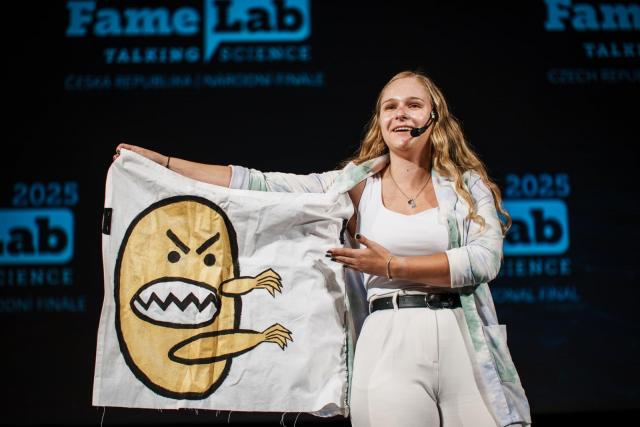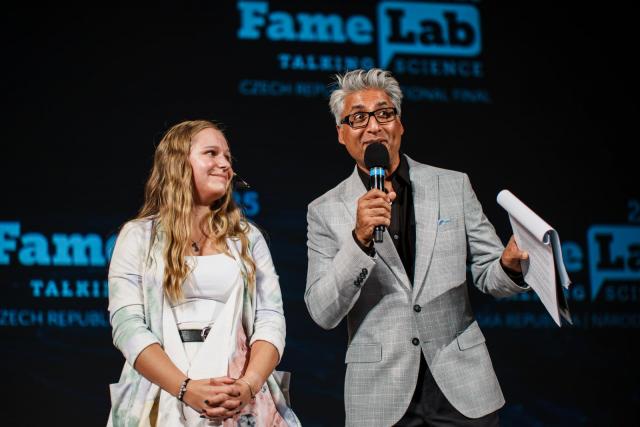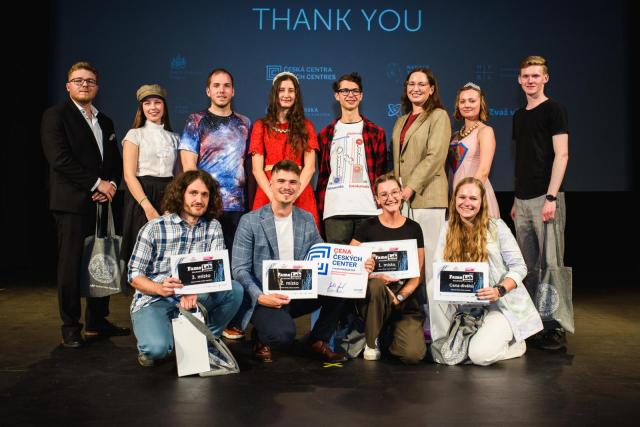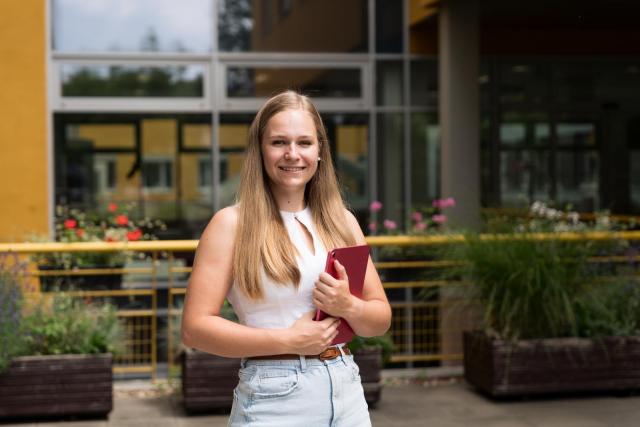FameLab Audience Award winner Kateřina Mašková: Chemistry is closer to people than they think
Kateřina Mašková, a student of Chemistry for Medical Applications at the Faculty of Chemistry, Brno University of Technology, became a finalist in the prestigious international competition FameLab 2025. The contest, held in 23 countries worldwide, aims to promote science communication — participants have only three minutes to engagingly explain their topic. Kateřina’s presentation on the use of plasma to accelerate wound healing captivated both the jury and the audience, earning her the Audience Award. What is it like to talk about science in front of a packed hall, race against time, and ultimately win the hearts of the audience?
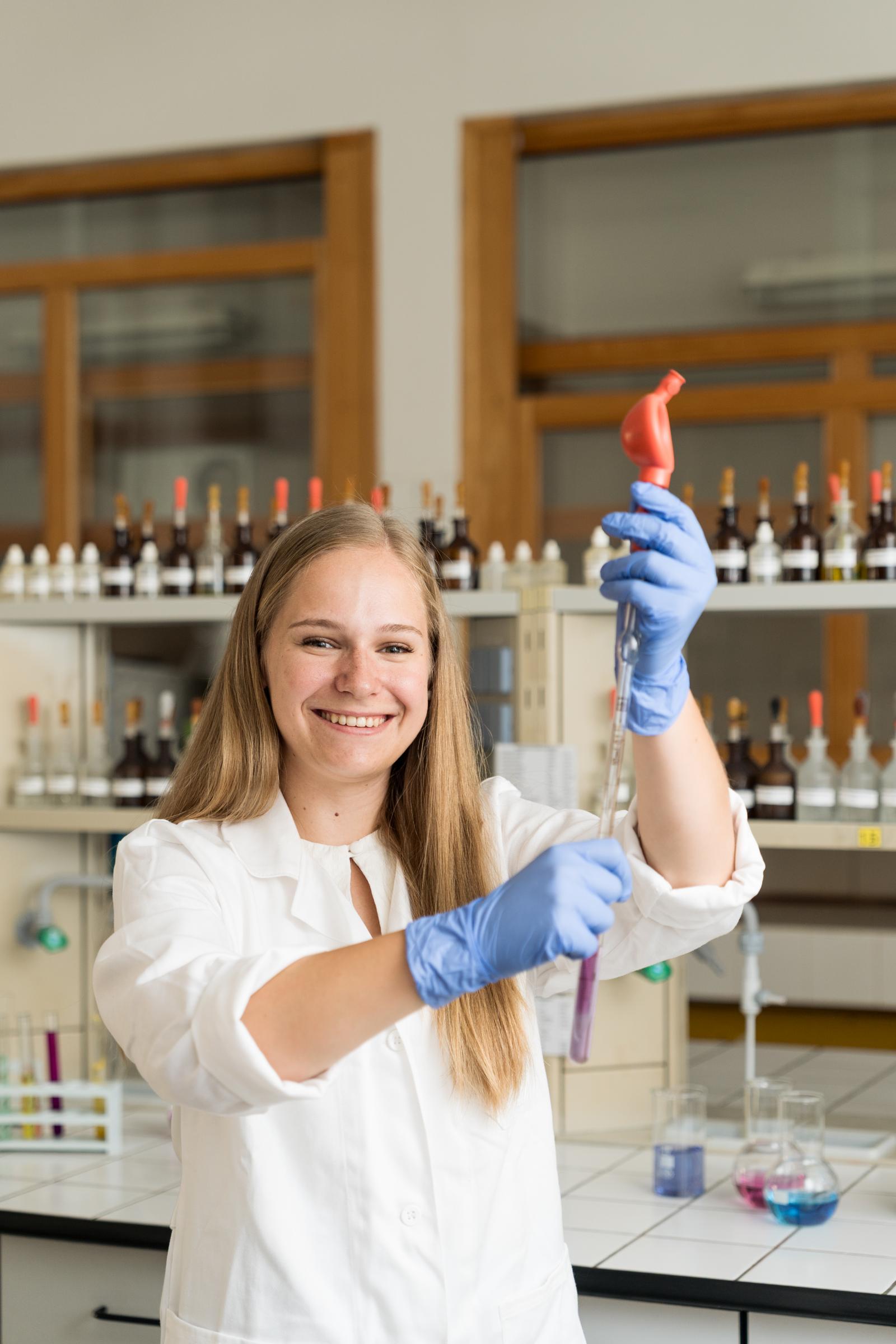
I enjoy creating videos on Instagram, and over time I started incorporating chemistry into them. We received an email from the university about FameLab, where the application involved recording a short video. In that video – just like in the final – you have three minutes to explain your scientific topic. It’s best to apply with the same topic you plan to present because it matters whether the topic is relatable to the audience. I just said, “Hi, I’m Kačka, and I’ll tell you this.” And then I went off like Eminem (laughs).
What drew you to FameLab?
Honestly, I barely knew what it was. When I read the invitation email, I thought, “Oh, that’s for talkative people – I’m in.” (laughs) Sometimes you just need to step out of your comfort zone, and I had never done anything like that before. I’d never had so many people listening to me. I told myself, “I’ll just try it – worst case, I’ll make a fool of myself.” (laughs) Another big motivation was that Mr Martínek – the “Know-It-All” from the Czech TV quiz show *Na lovu* – was on the jury. We all wanted to make it to the finals just to take a picture with him (laughs).
There were hundreds of people in the audience and twelve finalists. Most of us were chemists, biologists, or from other natural sciences. These fields seem most suited for science popularization – we’re usually hidden away in labs, and people don’t know much about what we do.
What expectations did you have going into the competition – and were they met?
I didn’t really have any. When I got the email saying I’d been selected, I was moved to tears and thought, “Oh my gosh, I’m really going to such a big event – with so many smart people watching – what am I going to do there?” I started doubting if I could handle it. It was a big deal, surrounded by intelligent people – most were engineers or PhDs, and I was the youngest, a fresh bachelor graduate.
The whole experience exceeded my expectations. Before our performances, we had a MasterClass – a professional training session on presentation skills. We learned how to use our voice and body language to appear confident. We weren’t confident, but it had to look like we were.
The final felt like another universe. It was amazing, nerve-wracking, and I can’t believe how fast it went by. I’m still processing it and thinking, “Did that really happen?” It’s been a week and I still can’t believe I managed something that big.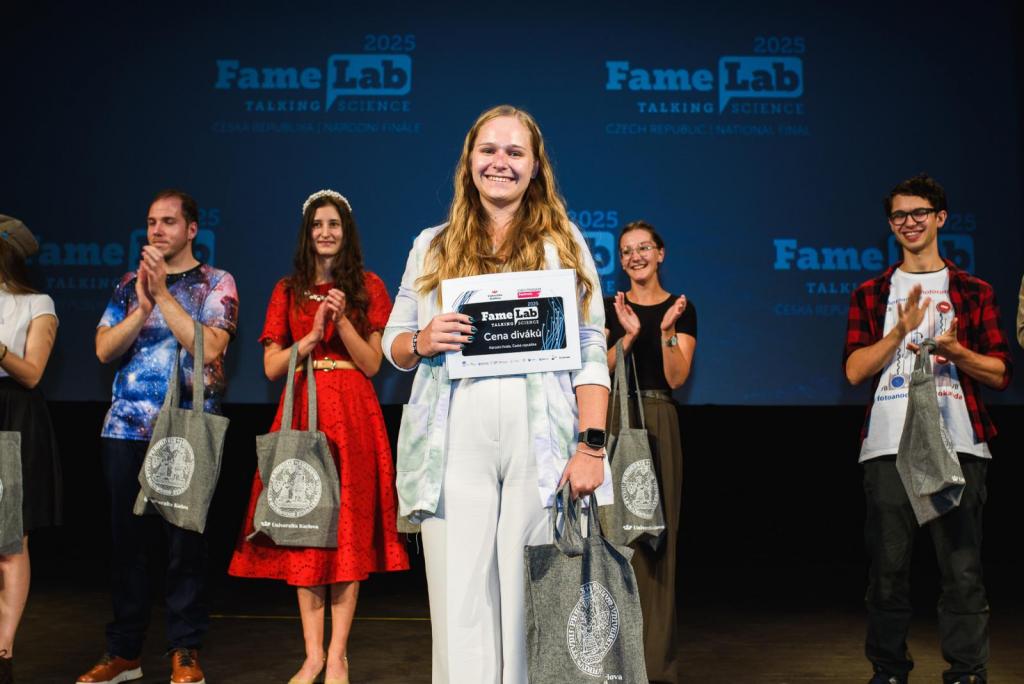
The hardest part was figuring out what exactly I wanted to say. Finding the balance between sharing enough information and not overwhelming the audience. If I said something too complicated, people might not understand. I tested my speech on my mom – she’s not into chemistry at all – and adjusted it based on her reactions. When I saw everyone’s eyes on me and realized they were genuinely interested, I was scared but also thrilled.
How did you prepare?
I tried to introduce plasma starting from the very basics – and a bit about myself too. During MasterClass, we were told not to talk too much about ourselves – the main star should be the audience – so I began by saying I was new to science, but everyone there had once been a beginner too. That helped me shift the focus to them.
I wrote a rough script and added metaphors to make it more engaging, to build up gradually, and end with flair – something that would make people think, “Wow, that’s a great method – we need that!” I finished with the thought that many people suffer from chronic wounds, and we still don’t know how to heal them. But what we’re working on can solve that! So next time you hear about plasma, don’t worry – it’s not a problem, it’s the solution.
I had drawings sewn inside my blazer, so when I walked on stage, they weren’t visible. When I mentioned them, I opened my jacket to show them to the audience. On one side was the yeast I worked with, and on the other, a little pig named Květoš – the star of my talk (laughs). It was something unexpected and fun, using visuals people could connect with. The text came naturally – I just tend to explain things simply.
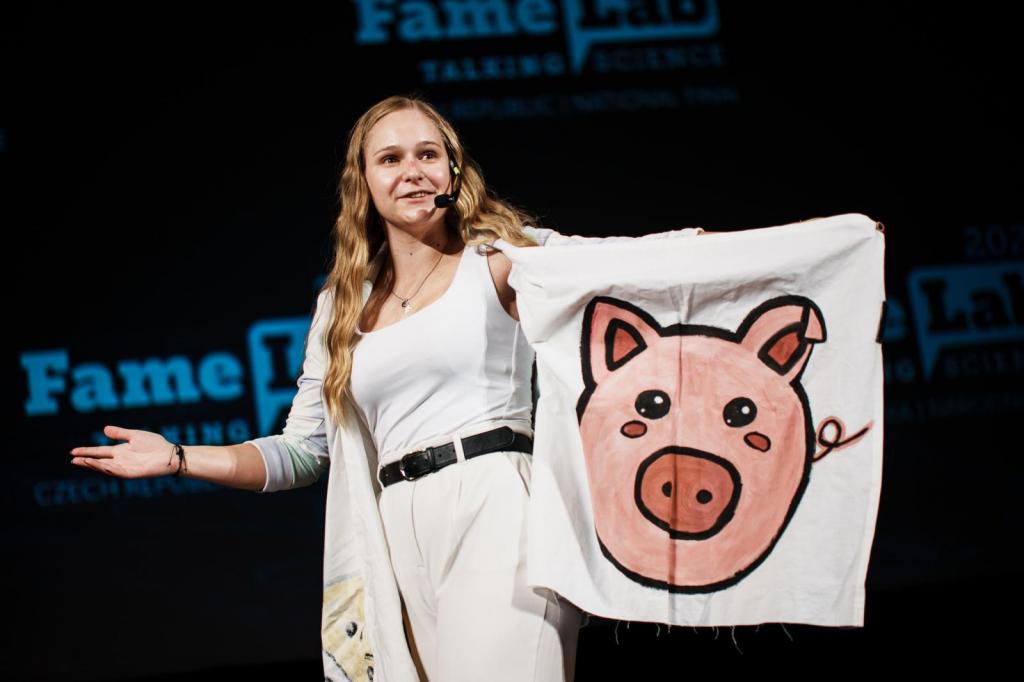
I practiced walking around and saying my text slowly – hoping it would stick (laughs). On stage, I focused on pausing more. For example: “We all know three states of matter…” – I stopped – “Well, that was a lie. You’re wrong, let me introduce you to something new.”
Training helped a lot – it made me speak slower, stand tall, and move my hands naturally. I thought about gestures that would support what I was saying – counting, showing energy flow, things like that. When the audience laughed at my first joke, the tension disappeared, and I started enjoying myself. You have to enjoy the experience – otherwise, it won’t mean anything to you.
We even asked the organizers to shine bright lights on us so we couldn’t see the audience and get nervous. I barely looked at the jury, only when I said something they might like. I mostly looked into the crowd. It looks like you’re making eye contact, but you can’t actually see anyone – and the audience still feels connected.
Which moment was the most intense?
Definitely the judges’ questions. I had tried to prepare for what they might ask, but some things in my topic just aren’t fully researched yet. One question made me think, “Okay Kačka, time to improvise.” (laughs) I was delighted when one of the judges said he liked my topic and wanted to visit our lab. Even people from the audience came to talk to us afterwards. Plasma was a hit – almost nobody knew about it before.
What do you enjoy most about science popularization?
I love showing people who don’t like chemistry that there’s no reason to fear it – it’s fun and more relatable than they think. I didn’t have a strong connection to chemistry at first; I actually came to this faculty by chance – and that’s where I fell in love with it.
I think this is where I truly found myself. I discovered I can be systematic, precise, and thorough – and I love that about myself. I can really express who I am. In chemistry, I can do physical chemistry, genetics, drug development – basically anything.
At the beginning, my friends helped me the most. When you find your group, share notes, explain things, and help each other – that’s priceless. Everyone finds their own community here; chemistry brings together all kinds of people.
How would you describe your popularization style?
I like joking and using metaphors. For example, when talking about plasma, I compared it to seasoning – everyone cooks and has salt at home – so I said, “Just like you balance spices in your food, we need to balance the composition of plasma.” That’s how I explain research through everyday experiences.
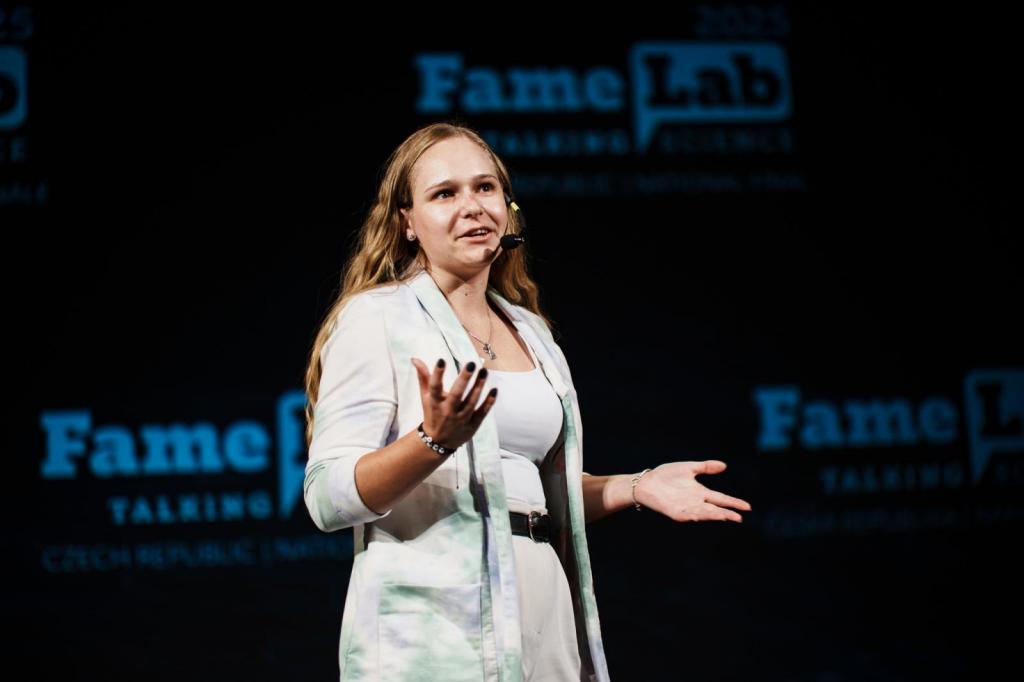
Because scientists are often closed off in their labs and assume everyone understands what they do. They use complex terminology and ways of explaining that people can’t follow. If we only talk to experts, we lose the ability to explain to non-experts. I’d actually love it if every researcher had to present their project in three minutes – it would benefit both the public and research funding.
What did FameLab give you?
It convinced me that I want to stay in science after graduation. I don’t want to do repetitive work – I want to keep sharing accessible science with people. I learned how to use my body language, handle stage fright, and stay calm when presenting. Now, when I speak in front of thirty people, I’m totally fine – it’s nothing compared to FameLab (laughs).
Your topic is wound healing with plasma. How does it work?
Plasma is a gas that’s partially ionized – we inject energy into it, electrons are released, and a mix of charged and neutral particles is formed. These reactive particles stress microorganisms. When they’re too stressed, plasma destroys them, disinfecting wounds. It also improves blood circulation, helping wounds heal. It’s used in medicine – for sterilizing long instruments, treating wounds, and even healing ear infections in dogs.
What fascinates you most about this research?
I love that it’s real and applicable. I tested plasma on pig skin, simulated a wound, and tried inhibiting yeast growth. It was great to see that it worked, that the results were stable, and the experiments kept progressing.
Do you think the technology will soon reach everyday use?
It’s already used to a limited extent in Germany. I’d love for it to become available here too. The challenge is the power source and large argon tanks, but a portable version could work. I hope it becomes common practice within the next ten years.
How do you perceive the support from our faculty?
Everyone here is wonderful. Whenever I need help, there’s always a solution – nothing is ever a problem. My supervisor Kristýna Trebulová even came to FameLab to support me, which meant a lot. The faculty really stood by me throughout the whole experience.
What would you say to students who hesitate to apply for a similar competition?
They should definitely go for it – there’s nothing to lose, only to gain. You gain experience, meet new people, and discover new opportunities in science. I’d recommend it to everyone – apply for FameLab!
You have thousands of followers on Instagram. How do you use social media for science communication?
I enjoy filming creative vlogs from the lab – sometimes with a dance or something light-hearted. I show science in a casual, accessible way. I’ve gained followers gradually over ten years, and some of my videos have reached a quarter of a million views. Instagram is like my personal diary – a mix of everyday life and chemistry.
Where do you see yourself in a few years – in the lab, on stage, or somewhere in between?
Definitely in the lab. I want to stay in the field and at the same time keep showing science on social media. I love connecting research with popularization and inspiring others.
Thank you for the interview, and we wish you lots of success in the future!
-jo-
| Published | |
|---|---|
| Link | https://www.fch.vut.cz/en//f96620/d305899 |
